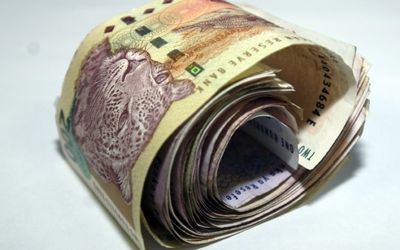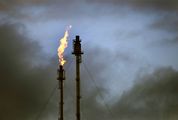THE rand could have been trading closer to R10/$ if SA did not have a R189bn shortfall on its current account, Standard Bank Research said on Monday. A stronger rand would have helped contain spikes in the petrol price and inflation.
Standard Bank head of research in SA Walter de Wet said: “The ... current account deficit may have been responsible for almost R2.5 depreciation in the rand against the dollar since September 2010.”
The bank expects the deficit to narrow slightly to 4.6% of gross domestic product in the second quarter from the first quarter’s 4.8%. It is then forecast to widen again to 5.8% in the third quarter before narrowing marginally to 5.5% in the fourth quarter. Lower metals and mineral commodity exports are expected to offset the benefits derived from lower oil prices.
The country has run a budget deficit for the past decade. The shortfall has been plugged through foreign investors acquiring stakes in South African companies.
Although the large current account deficit plays a role, the rand weakness now had more to do with the dollar firming amid speculation of the first US interest rate hike since 2006 before year end. Although a weaker rand normally stokes inflation, this has happened at a slower pace than in previous years.
Mr de Wet attributed the low exchange rate to the “excess capacity in the economy, combined with weak demand where … producers find it very difficult to pass on prices to the consumer”.
Inflation was likely to average 4.7% this year and 5.7% next, the bank estimated. It expected interest rates to remain unchanged for the rest of this year and rise by 25 basis points in the middle of next year. The Reserve Bank raised rates by 25 basis points last week.
The economy was likely to grow 2% this year and 1.7% next year. The moderate growth is expected — even though electricity supply constraints are expected to ease.
Mr de Wet cited lower real wages, weak credit extension, lower commodity prices, struggling mining and manufacturing sectors, and dividend outflows next year as some of the contributing factors for the poor growth outlook.
Local companies are also not investing significantly in SA but elsewhere on the continent, which compromises local economic growth.
Some economists think low business confidence will translate into low investment spending by companies, and thus weaken hiring.
Jobs data out this week are likely to show that unemployment rose in the second quarter.

Picture: FINANCIAL MAIL
THE rand could have been trading closer to R10/$ if SA did not have a R189bn shortfall on its current account, Standard Bank Research said on Monday. A stronger rand would have helped contain spikes in the petrol price and inflation.
Standard Bank head of research in SA Walter de Wet said: “The ... current account deficit may have been responsible for almost R2.5 depreciation in the rand against the dollar since September 2010.”
The bank expects the deficit to narrow slightly to 4.6% of gross domestic product in the second quarter from the first quarter’s 4.8%. It is then forecast to widen again to 5.8% in the third quarter before narrowing marginally to 5.5% in the fourth quarter. Lower metals and mineral commodity exports are expected to offset the benefits derived from lower oil prices.
The country has run a budget deficit for the past decade. The shortfall has been plugged through foreign investors acquiring stakes in South African companies.
Although the large current account deficit plays a role, the rand weakness now had more to do with the dollar firming amid speculation of the first US interest rate hike since 2006 before year end. Although a weaker rand normally stokes inflation, this has happened at a slower pace than in previous years.
Mr de Wet attributed the low exchange rate to the “excess capacity in the economy, combined with weak demand where … producers find it very difficult to pass on prices to the consumer”.
Inflation was likely to average 4.7% this year and 5.7% next, the bank estimated. It expected interest rates to remain unchanged for the rest of this year and rise by 25 basis points in the middle of next year. The Reserve Bank raised rates by 25 basis points last week.
The economy was likely to grow 2% this year and 1.7% next year. The moderate growth is expected — even though electricity supply constraints are expected to ease.
Mr de Wet cited lower real wages, weak credit extension, lower commodity prices, struggling mining and manufacturing sectors, and dividend outflows next year as some of the contributing factors for the poor growth outlook.
Local companies are also not investing significantly in SA but elsewhere on the continent, which compromises local economic growth.
Some economists think low business confidence will translate into low investment spending by companies, and thus weaken hiring.
Jobs data out this week are likely to show that unemployment rose in the second quarter.

























Post a comment